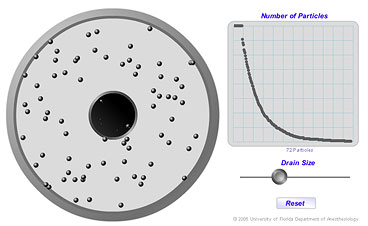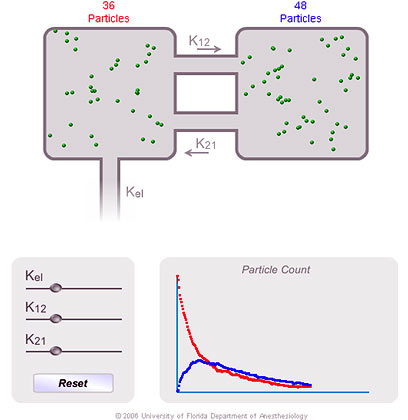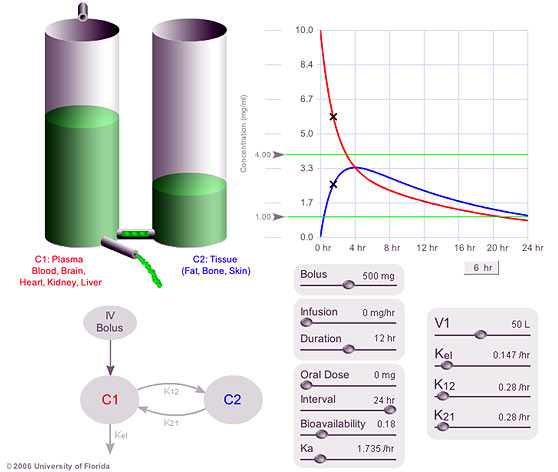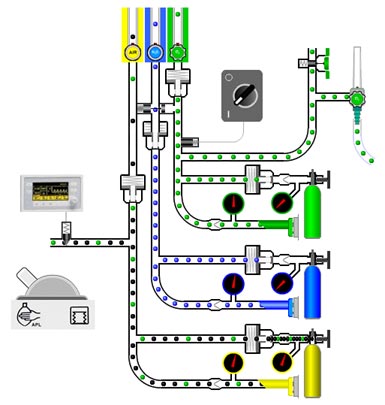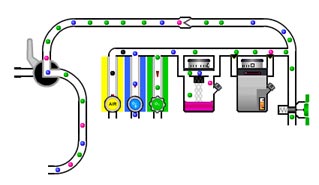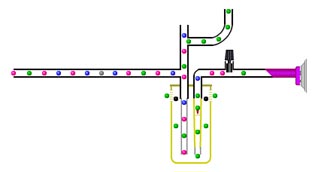
| VAM Instructor Area Content | Login to VAM |
![]()
Coming soon - a new section in the instructor area on the Physics of Anesthesia
Configurable transparent reality simulation of anesthesia machines (Modulus II, Aestiva, etc.)
Stochastic visualization of a 1-compartment pharmacokinetic model
Hydraulic analog simulation of a 1-compartment pharmacokinetic model (Deterministic)
Stochastic visualization of a 2-compartment pharmacokinetic model
Hydraulic analog simulation of a 2-compartment pharmacokinetic model (Deterministic)
Stand alone, configurable simulation of high pressure systems of anesthesia machines
Stand alone, configurable simulation of low pressure systems of anesthesia machines
Stand alone, configurable simulation of scavenging systems for anesthesia machines
Black box simulation of the Aestiva anesthesia machine
Black box simulation of the Modulus II anesthesia machine
Instructor's manual for teaching with instructor VAM
How to Obtain Access to the VAM Instructor Area
Why is the Access Model Being Tweaked for the VAM Instructor Area?
| Configurable VAM | 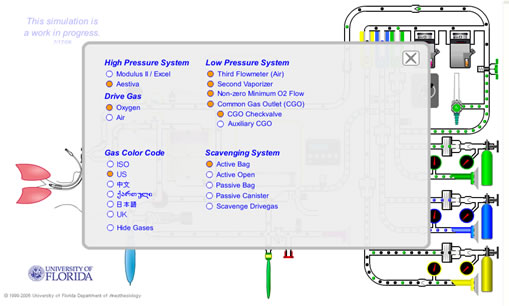 |
![]()
Dialysis Simulation This simulation is a VAM-like version of a dialysis machine, specifically a CVVH (Continuous Veno Veno Hemodialysis) machine. It is modeled after BBraun's Diapact CRRT. Development was funded entirely by the University of Florida (UF) in an unsucccessful effort to develop a collaborative educational simulation in partnership with BBraun. UF is currently seeking industry partners to continue development of the CVVH/dialysis simulations. The simulation is targeted primarily towards ICU nurses, who may need to interface with the dialysis machine when dialysis technicians are unavailable. |
 |
![]()
![]()
One-Compartment Hydraulic Analog Simulation (Deterministic) Based on deterministic equations, this simulation of a hydraulic analog of a single compartment pharmacokinetic model facilitates visualization of the response to a bolus injection. The height of the meniscus, the cross-sectional area and the size of the drain hole are user adjustable and correspond to the drug concentration, the volume of distribution and the clearance rate respectively. |
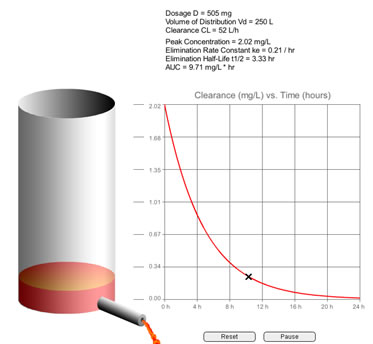 |
![]()
![]()
![]()
![]()
![]()
![]()
Aestiva Simulation A blackbox simulation of the Aestiva anesthesia machine, with no visible gas flows. |
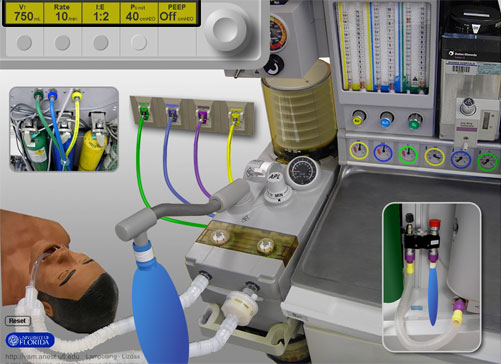 |
![]()
Modulus II Simulation A blackbox simulation of the Modulus II anesthesia machine, with no visible gas flows. |
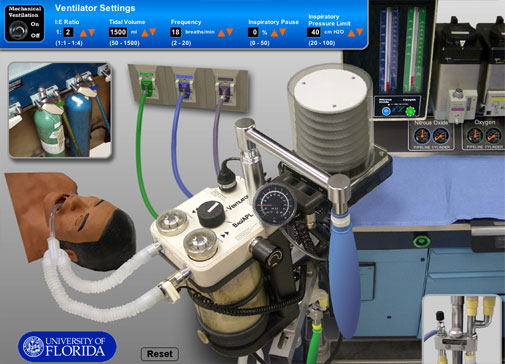 |
![]()
The unique features of Instructor VAM relative to the free basic VAM version are listed below.
Spontaneous breathing
Fourteen anesthesia machine faults and a randomized mystery fault.
A tutorial on how to use instructor VAM and how the faults may be used for instruction
Ability to pause/resume the simulation
Ability to hide/show the gas molecule icons, depending on teaching style or to make some faults less obvious
Ability to select and track a single gas molecule as it flows through the machine
Adjustable Ventilator Settings
I:E ratio
Tidal volume
Frequency
Inspiratory pause
Inspiratory pressure limit
Monitoring
SpO2 including tones and alarms
FiO2 including alarm
Capnogram including normal and abnormal capnograms
NIBP
HR
Airway pressure trace
Exhaled VT measurement
Minute ventilation measurement
Audible alarm and silence button
![]()
How to Obtain Access to the VAM
Instructor Area
To obtain free access to the VAM instructor area, ask representatives
of drug and anesthesia equipment companies to sponsor
access to the VAM instructor area (US$100 per year
per instructor). Alternatively, you or your hospital, University or
institution can purchase access
to the VAM Instructor area by sending US$100 by credit card or check/money
order for an annual fee. Click here for
details for sponsoring/obtaining access to the VAM instructor area.
Continued free access to the simulations in the free Member's Area
is supported, in part, by the fees for accessing the VAM Instructor
area.
![]()
Why is the Access Model Being
Tweaked for the VAM Instructor Area?
The VAM project, beyond being an exploration of model-driven, interactive
web simulation, is also an experiment in sustainable web philanthropy.
The VAM team, with the financial support of the chair of the UF Department
of Anesthesiology, made the decision right from the start in 1999
to make the VAM simulation available free of charge over the Web so
that financial means would not be a barrier to access to essential
patient safety materials. Our strategy was to obtain funding via corporate
sponsorship and donations to eventually (within 5 years) meet the VAM
team's payroll and make the VAM project self-sustaining.
Five years into this funding experiment, we had to admit that VAM's philanthropic access model as originally conceived has failed and will not work without tweaking. From 1999 to 2004, we received $22,500 in corporate sponsorship and $510 in donations, accounting for less than 5% of the total VAM team payroll. Lampotang et al, Anesthesiology 99: A1319, 2003
It is important to note that the simulations in the Member's Area remain free. Access to the VAM instructor area is also "free" to you if one of your industry contacts sponsors you.
